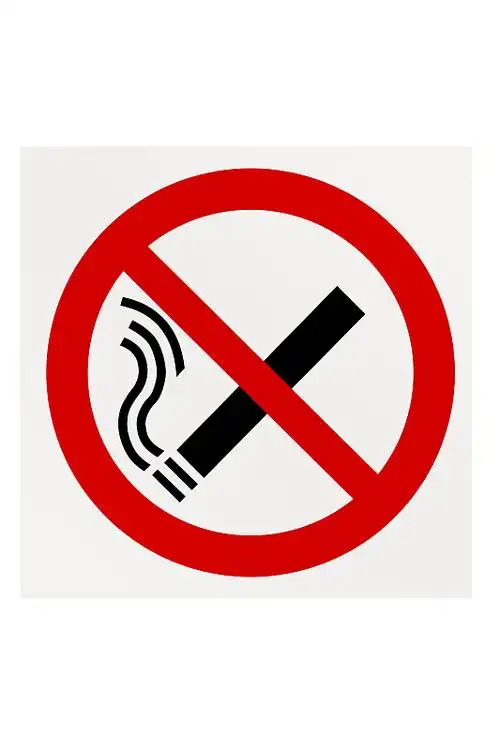The Ultimate Guide to Picking Your Perfect Vape Coil Wire Gauge
So, you've ventured beyond the simple pod system and are diving into the rewarding world of rebuildable atomizers or even just curious about the pre-built coils you're buying. Welcome! One of the most fundamental, yet often confusing, choices you'll face is selecting the right wire gauge for your vape coil. It might seem like a small detail, but this single number holds the key to your entire vaping experience—flavor, vapor production, and battery life.
Think of wire gauge like the plumbing in your house. A narrow pipe (a high-gauge wire) restricts flow, while a wide pipe (a low-gauge wire) allows for a lot more to pass through. In vaping terms, this "flow" is electricity and heat. Let's demystify this topic together and find the perfect gauge for your style.
First Things First: What is Wire Gauge?
In simple terms, the "gauge" refers to the thickness of the wire. The numbering system can be a bit counter-intuitive:
- A lower gauge number means a thicker wire. (e.g., 22-gauge is very thick).
- A higher gauge number means a thinner wire. (e.g., 32-gauge is very thin).
This thickness directly influences three critical properties of your coil:
- Resistance (Ohms): Thicker wire (lower gauge) has less resistance to electrical current, leading to a lower ohm coil. Thinner wire (higher gauge) has more resistance, resulting in a higher ohm coil.
- Surface Area: A thicker wire has more surface area touching the cotton. More surface area generally means more vapor and potentially more flavor.
- Heat Capacity (Mass): Thicker wire has more metal mass. This means it takes longer to heat up (slow ramp-up time) and longer to cool down. Thinner wire heats up almost instantly but also cools down quickly.
Now, let's break down the most common gauges and the vaping experiences they create.
The Common Gauges Decoded: From Subtle Flavor to Cloud Chasing
High-Gauge Territory (Thin Wires): 26G, 28G, 30G and higher
- Best for: Flavor-focused vaping, Mouth-to-Lung (MTL) vaping, lower wattages, single-coil builds, and beginners.
- Typical Resistance Range: 1.0 ohm and above (can be built lower).
These thinner wires are the go-to choice for a classic, restricted vape. Because they have high resistance and low mass, they require less power to heat up quickly.
- 28-Gauge (28G): This is a fantastic all-rounder for MTL vaping and a great starting point for beginners learning to build coils. It's easy to wrap, heats up instantly, and provides excellent, crisp flavor at lower wattages (10-20W). If your primary goal is to replicate the sensation of smoking with a tight draw and concentrated flavor, 28-gauge Kanthal wire is a perfect choice.
- 26-Gauge (26G): Sitting in a sweet spot, 26G offers a bit more surface area and lower resistance than 28G. It's versatile enough for a slightly airier MTL draw or a restricted Direct-to-Lung (DTL) vape. It works wonderfully in single-coil rebuildable tanks where you want a balance of flavor and moderate vapor production at 20-35W.
The Middle Ground: 24-Gauge (24G)
- Best for: Balanced Direct-to-Lung (DTL) vaping, beginner-friendly cloud production, and dual-coil setups.
- Typical Resistance Range: 0.3 - 0.6 ohms (for a single coil).
If you're moving into the world of direct-lung inhales and more substantial vapor, 24-gauge is your best friend. It's arguably one of the most popular and versatile gauges for DTL vaping.
It's thick enough to provide significant surface area for good vapor and flavor but not so massive that it requires a monstrous mod to run. A single 24G coil can perform well at 30-50W, while a dual-coil setup will shine in the 60-90W range. For vapers wondering, "what is the best vape wire gauge for balanced flavor and clouds," 24G is very often the answer. It's a workhorse that is easy to work with and delivers a satisfying, warm vape.
Low-Gauge Territory (Thick Wires): 22G, 20G and lower
- Best for: High-wattage cloud chasing, complex multi-coil builds, and experienced users.
- Typical Resistance Range: Can be very low (e.g., 0.1 - 0.3 ohms for a dual-coil build).
This is the territory of high-performance and high-power vaping. These thick wires have very low resistance and massive surface area and heat capacity.
- 22-Gauge (22G): This wire demands power. It has a slow ramp-up time and needs a capable, high-wattage mod and strong batteries to shine. It's used for creating very dense, warm vapor in dual-coil or even quad-coil setups, often pushing into the 80-120W+ range. The best wire gauge for massive cloud production often starts here.
- 20-Gauge and Lower: These are specialist wires for extreme cloud competitions and complex builds. They place huge demands on your batteries and mod, generate intense heat, and are generally not recommended for everyday use or beginners. Safety knowledge of your batteries' limits is absolutely non-negotiable here.
The Modern Twist: Why Many Vapers Skip Single Wires Altogether
While understanding single wire gauges is crucial, the landscape of vaping has evolved. Most advanced vapers today don't use simple round wires for their main builds. Instead, they use:
- Fused Claptons: A core of two or more parallel thick wires (e.g., two 26G cores) wrapped with a much thinner outer wire (e.g., 36G). This combines the low resistance and current-carrying ability of the thick cores with the immense surface area of the outer wrap. The result is explosive flavor and vapor at the cost of higher power requirements and slower ramp-up.
- Aliens, Staples, and More: These are even more complex variations that prioritize maximizing surface area.
So, how does gauge fit in here? When you buy a pre-made fused Clapton coil, the description might say "2*26/36". This means it has two 26-gauge cores wrapped with a 36-gauge wire. The core wire gauge here defines the coil's basic power handling and resistance, while the outer wrap gauge is chosen for its ability to wick e-liquid via capillary action into the core.
Your Decision-Making Checklist: Putting It All Together
Don't just pick a random number. Ask yourself these questions to find your ideal vape coil gauge:
-
What is my vaping style?
- Tight MTL (like a cigarette): Choose 28G or 26G.
- Restricted DTL / Balanced RDL: Choose 26G or 24G.
- Airy, Cloud-Focused DTL: Choose 24G or 22G (or move to complex coils like Fused Claptons).
-
What kind of device and power do I have?
- Low-wattage pod mod or single-battery mod: Stick to 26G-30G. They will perform efficiently without draining your battery in 10 puffs.
- Dual-battery regulated mod: You have the power to run 24G, 22G, and most pre-made complex coils safely.
-
Am I building single or dual coils?

- Single Coil RDA/RTA: 24G and 26G are kings here, offering a great balance. You can also use a thin-core Clapton (like a 28Gx2/38G).
- Dual Coil RDA/RTA: Using two coils halves the total resistance. So, if you want to vape at a high wattage, you might start with 26G. If you want a very warm, powerful vape, 24G or 22G is your pick.
-
What about ramp-up time?
- If you hate waiting for your coil to heat up, thinner gauges (26G+) and complex coils with very thin outer wraps (38G, 40G) are your friend.
Final Puffs of Wisdom
Starting with a spool of 24-gauge Kanthal A1 wire or 26-gauge Nichrome 80 wire is one of the best decisions a new builder can make. They are forgiving, versatile, and will help you learn the relationship between resistance, mass, and power without frustration.
Remember, the best vape coil wire gauge isn't a universal truth; it's a personal preference that aligns your gear with your desired experience. Don't be afraid to experiment. Buy a few small spools of different gauges—perhaps 28G, 26G, and 24G—and see how they change the vape in your specific atomizer. This hands-on testing is the most rewarding part of the journey, moving you from following instructions to truly mastering your own perfect setup. Happy vaping











